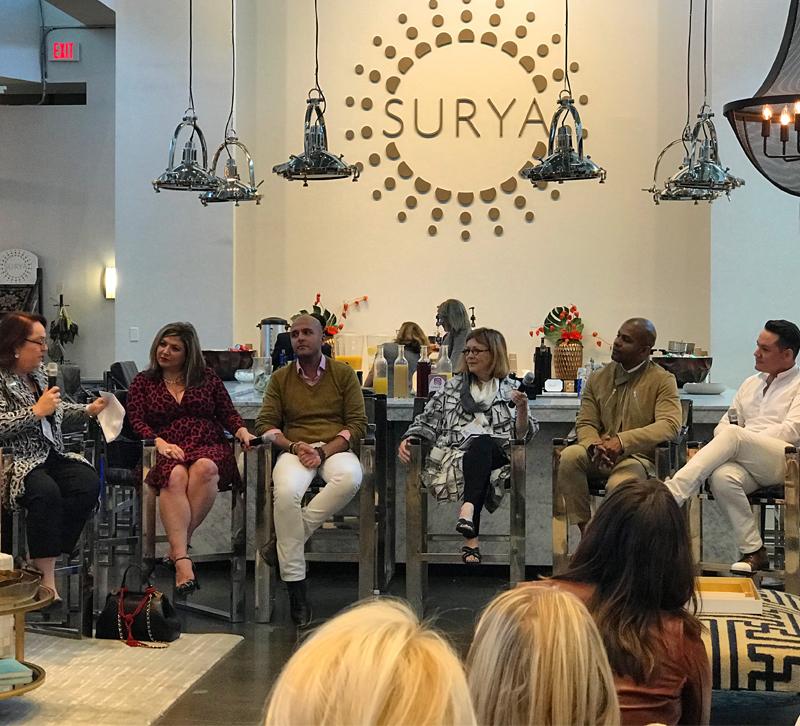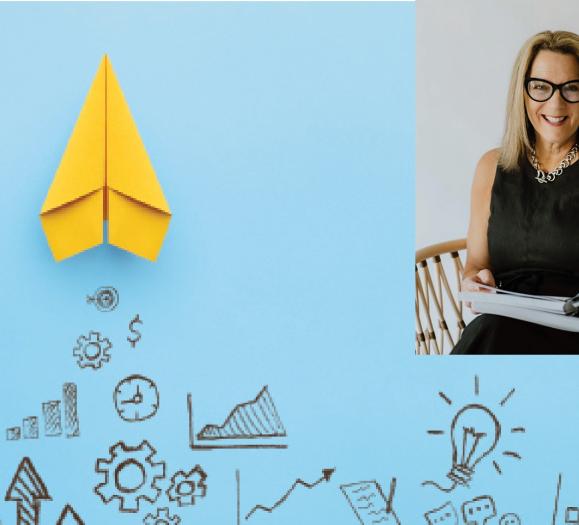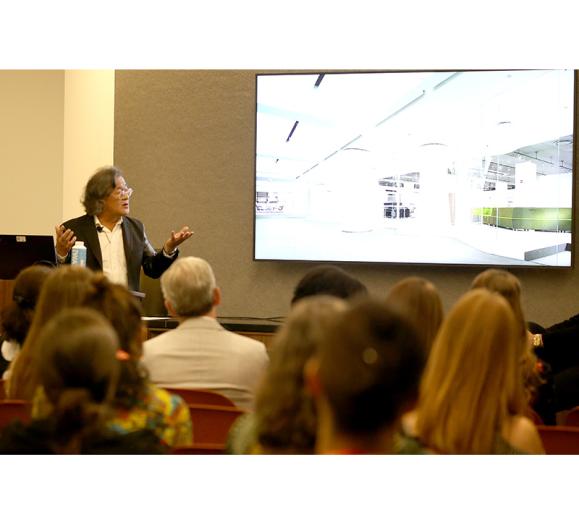Since even the most successful and talented can sometimes struggle to fan the creative spark, Surya brought together five leading interior and product designers — Michel Smith Boyd, Toma Clark Haines, Mary Douglas Drysdale, Xander Noori and Keon Khajavi-Noori — to offer insights into how they recharge their batteries and maintain flow.
All say finding time to travel is key, as is solitude, and for most, a place to draw and play. “When I need inspiration, I always go someplace that I’m going to feel small, a place where I will feel like a student again,” says Smith Boyd, the Atlanta-based designer and star of "Buying It Blind," a new television series on Bravo that debuted earlier this month.
“The other place I like to be is in my office … alone. I think most creatives are introverts disguised as extroverts. When my team leaves, the real magic happens because design for me is so personal and romantic, and I have to develop the story in my head before I can share it with anyone else,” he relates. “My personal space is full of texture with marble and brass, but it’s also very minimal because I need a clean palette. It’s a place where I can step into my head and move around a bit. I have a great dry-erase board that’s about 12 feet long with a movable wall that slides across. It’s massive, and I can pin ideas and draw on it.”
“We’ve been in 10 countries in the past 10 months,” says Noori, nodding to partner Khajavi-Noori, co-founder of Xander Noori, LLC, a multifaceted creative firm focused on interiors, product and furniture design. “For me, the ultimate inspiration is to get lost in a place that I don’t know, just to look up and see unusual architectural silhouettes or the way the sunlight hits a city, or how the nature looks different. It’s sort of an undiscovered sensibility, and I’m constantly photographing and sketching on the fly whatever is in front of me and bringing all of that back to the office.”
Inside that office, the couple’s five- and two-year-olds help keep the creative juices flowing according to Khajavi-Noori. “Whenever Xander is sketching, they have to be sketching with him. It sounds more elegant than it is, but it’s a lot of cutting paper and drawing all over the paper.” The playfulness extends to resources as well. Along with piles of vintage books, “I have a lot of pin-up boards and trays full of materials that I assemble for color stories,” Noori says.
Khajavi-Noori, on the other hand, prefers everything in its place and making solitary site visits. “This might sound crazy, but I like going to a location with my tape measure and just sitting in the empty room for an hour, taking in the smells, the way the light hits, and watching how the direction of the sun changes. I play off of that. I’m inspired by lighting, anything that adds sparkle and throws rainbows across a room without being glitzy and I have to be on location. I have to invade a client’s space to help them build it.”
“For me, it’s keeping a state of mind that is open and determined,” notes Washington, DC-based designer Drysdale. “I insist on being my own muse; that’s not a responsibility I can give to anyone else. And, I can’t say that there’s a specific place that I feel inspired because an idea might come while I’m taking out the trash."
Clark Haines, the Antiques Dive, travels with her office in tow. “My workspace is my suitcase and wherever I am, whether that’s on a plane, at market or in a Starbucks,” she says. But a sense of play is important to her process as well, and in fact, led to her latest product debut, a jewelry collection. “I was in Bangkok in a magical building called the Jewelry Trade Center (JTC). There were buckets upon buckets of stones, and I was reaching in pulling out of handfuls of rubies and emeralds. They brought me tray after tray and I started sketching around the stones. I had so much fun that there are 91 pieces in the first collection, which is a crazy number, but designing it never felt like work.”
Going for the flow
To avoid getting stuck, Drysdale sets aside specific amounts of time and space for tasks. “I find that if I’m working on something where I’m creatively challenged for more than two hours, I drop it, because I’m getting in my own way,” she says. “I’ll come back to it later that day or later in the process because I don’t want to waste time and I always like to look at things with a fresh eye.”
“Sometimes though, you’re under pressure and I often find myself working through that blank page,” describes Noori. “I immerse myself in finish samples, tiles, stone, color charts and all my sketches. I’ve got bins and shoeboxes and drawers full of sketches of furniture, lighting and motifs, all kinds of things, and there are a couple of books that I’ll reference that are just amazing.”
“He works better under pressure,” Keon chimes in with a laugh, “because he procrastinates and procrastinates. I’m just the opposite.”
“When I’m having trouble with one problem, I find another problem to solve,” remarks Smith Boyd. “The craziest thing is that if I’m having issues with a client or one of my builds, I’ll go downstairs and flip my entire main level around or change my bedroom around so that it’s all different. It’s like therapy for me and clears my head. I find that somehow in solving the smaller problem, the ideas come for how to fix the big ones that I was working on.”
Clark Haines has become a devotee of another type of therapy: massage. “About a year-and-half-ago I had a situation where I had to make some major, major decisions and the more I thought about them, the more impossible the entire situation seemed. I saw a therapist and she said, ‘Get a massage.’ Three months later I still hadn’t made the big decisions, so I thought, ‘Okay, what have I got to lose?’ I booked the massage, and then another and another. It worked, and I found such clarity. At this point in my life, I’m trying to do a massage once a month, because massage forces me to sit still. I’m always doing and moving and talking, and I’ve learned that the self-care, and giving myself time to really think about nothing, allows me to get the real work done. As Picasso once said, ‘Without great solitude no serious work is possible.’”
“It’s not that you’re not thinking of anything, it’s that you’re not distracted by a hundred other days,” Drysdale agrees. “You create the environment you need in order to think rationally about your small or big problems. In 1999, I had a terrible accident and was told that I would never walk or see again, and that did not sit very well with how I saw the rest of my life going. So, I really began to be very mindful and conscious of how I walked, what I ate and what I needed to breathe in a certain way. And I would say that how I approach my business is how I approach my life — making sure that I’m clear and that I leave enough room in my mind to be able to work through all the issues that are important.”
“We have such big lives,” sums Smith Boyd, “with so much responsibility, and the mantra is always hustle, hustle. I think we are all living outside of our margins. I get lost in painting and it’s one of those things that brings me such joy, but it’s really the last thing I have time to do. To be creative, we all need to slow down a bit for the things we love … the friendships and hobbies and the things that make life worth living.”







